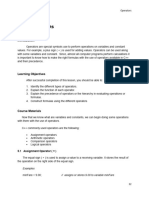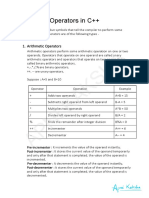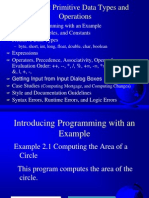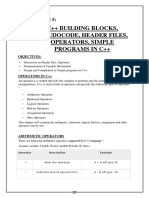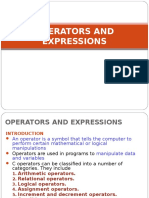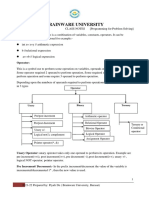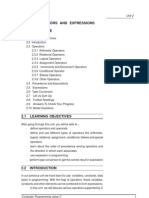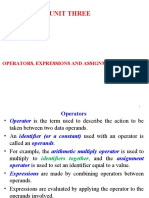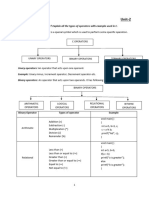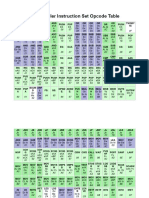0% found this document useful (0 votes)
10 views14 pagesLecture 3 Operator
The document provides an overview of different types of operators in programming, including unary, binary, and ternary operators, along with their functions and examples. It explains assignment, arithmetic, logical, relational, and conditional operators, detailing how they operate on operands and the rules for expression evaluation. Additionally, it includes exercises for practice to reinforce understanding of operator types and expression evaluation.
Uploaded by
islamrafiul046Copyright
© © All Rights Reserved
We take content rights seriously. If you suspect this is your content, claim it here.
Available Formats
Download as PDF, TXT or read online on Scribd
0% found this document useful (0 votes)
10 views14 pagesLecture 3 Operator
The document provides an overview of different types of operators in programming, including unary, binary, and ternary operators, along with their functions and examples. It explains assignment, arithmetic, logical, relational, and conditional operators, detailing how they operate on operands and the rules for expression evaluation. Additionally, it includes exercises for practice to reinforce understanding of operator types and expression evaluation.
Uploaded by
islamrafiul046Copyright
© © All Rights Reserved
We take content rights seriously. If you suspect this is your content, claim it here.
Available Formats
Download as PDF, TXT or read online on Scribd
/ 14











